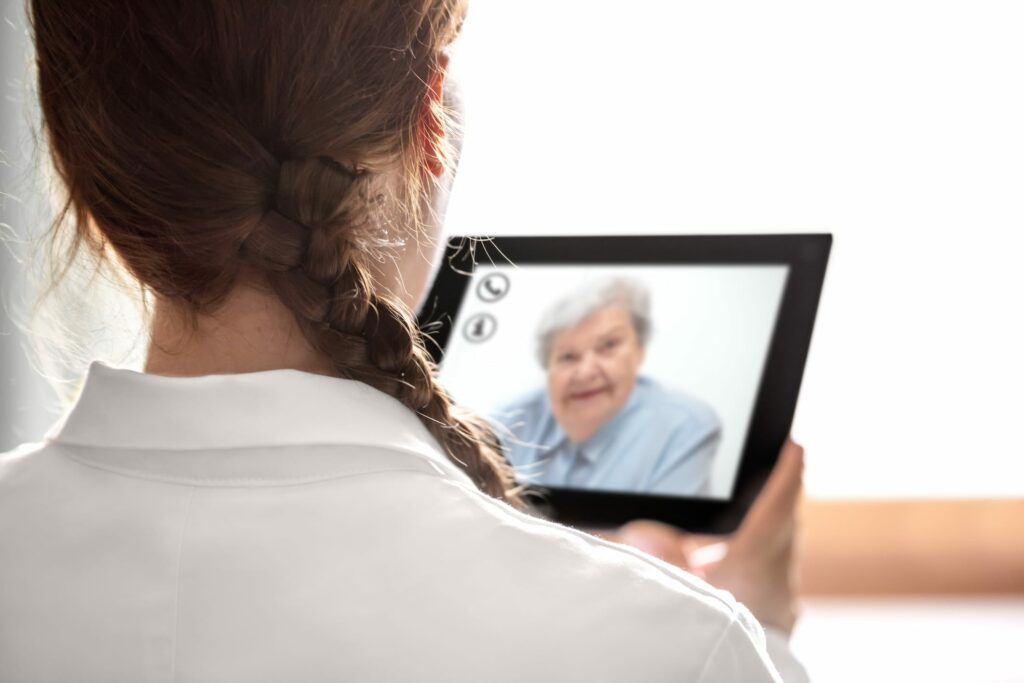Mobile health applications are helping provide teledermatology services that expand access to care. These applications are particularly beneficial for patients in remote or underserved areas, offering a convenient and efficient way to receive dermatological consultations and treatments.
Here, we explore the current landscape of teledermatology, including its benefits, challenges, and impact on healthcare systems.
The Rise of Teledermatology
Teledermatology involves the use of telecommunications technology to provide dermatological services and care remotely. With the advent of mobile apps, teledermatology has become more accessible and user-friendly, allowing patients to seek expert advice without the need for in-person visits.

Applications like FirstDerm, Dermio, and SkinVision are leading the charge in this domain, offering a range of services from remote consultations to AI-powered skin lesion analysis (MDPI) (PLOS).
Benefits of Teledermatology
- Increased Accessibility: Teledermatology apps significantly enhance access to dermatological care, particularly for patients in rural or underserved areas where dermatologists are scarce. These apps allow patients to submit photos of their skin conditions and receive expert consultations from dermatologists within hours. This immediacy can be crucial for conditions that require prompt attention, such as suspicious skin lesions that may indicate cancer (MDPI).
- Convenience and Efficiency: Mobile apps eliminate the need for travel and long waiting times, providing a convenient alternative for both patients and healthcare providers. This efficiency not only improves patient satisfaction but also allows dermatologists to manage their time more effectively, potentially increasing the number of patients they can see in a day (Florida Healthcare Plus).
- Cost-Effectiveness: Teledermatology can reduce healthcare costs by minimizing unnecessary in-person visits and hospital admissions. For instance, patients with chronic skin conditions can manage their symptoms and receive follow-up care remotely, which can reduce the frequency of expensive emergency room visits (MDPI).
Challenges in Implementing Teledermatology
Despite its benefits, teledermatology faces several challenges:
- Technological Barriers: Effective teledermatology requires reliable internet access and a certain level of technological literacy, which can be barriers for some patients, particularly the elderly or those in extremely remote areas without stable internet connections (PLOS).
- Regulatory and Privacy Concerns: Ensuring patient data privacy and meeting regulatory requirements are critical challenges. Teledermatology apps must comply with health information privacy laws, such as HIPAA in the United States, to protect patient information. Ensuring these apps have robust security measures in place is essential for maintaining patient trust (MDPI).
- Quality of Care: While teledermatology is effective for many conditions, it may not be suitable for all. Certain skin conditions require physical examination and direct interventions that cannot be replicated through a digital interface. Ensuring that patients are appropriately triaged and referred for in-person care when necessary is crucial (Florida Healthcare Plus).
Case Studies

Case Study: FirstDerm
- Functionality: Provides remote consultations by board-certified dermatologists.
- Outcome: Demonstrated high accuracy in diagnosing common skin conditions and significantly reduced time to treatment compared to traditional in-person visits (MDPI).
Case Study: Dermio
- Functionality: Offers teledermatology services along with educational resources.
- Outcome: Increased patient engagement and adherence to treatment plans through accessible information and easy follow-up consultations (Florida Healthcare Plus).
Impact on Healthcare Systems
Teledermatology has the potential to alleviate the burden on healthcare systems by reducing the need for in-person visits and streamlining the management of dermatological conditions. It enables dermatologists to provide timely care to a larger patient population, improving overall healthcare efficiency. Additionally, the data collected through these apps can be used for research and to inform public health strategies, further enhancing their impact (PLOS).
Looking Ahead
Teledermatology, facilitated by mobile health applications, is expanding access to dermatological care, offering benefits in terms of accessibility, convenience, and cost-effectiveness. While challenges remain, particularly around technology access and regulatory compliance, the potential for teledermatology to improve patient outcomes and optimize healthcare delivery is substantial.
References
- Giansanti, D. “Tele-dermatology and mHealth for managing skin conditions.” Journal of Telemedicine and Telecare, 2023.
- Janda, M., et al. “Impact of a mobile health app on melanoma early detection in Australia: a randomized clinical trial.” JAMA Dermatology, 2021.
- Marr, B. “How AI and machine learning are transforming dermatology.” Forbes, 2022.
Photo 191067876 © Dark1elf | Dreamstime.com




